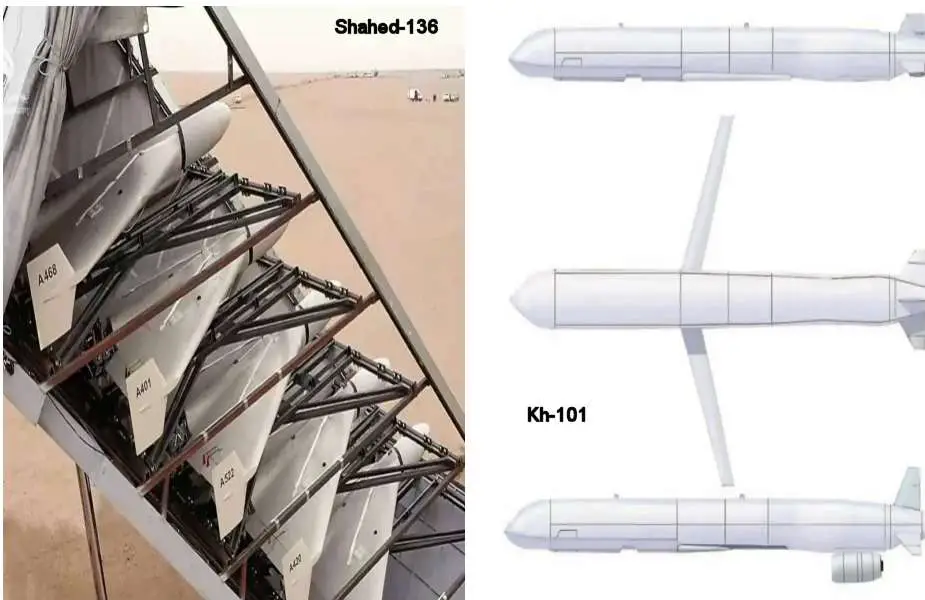Ukrainian authorities announced that during the night of December 28-29, 2023, they suffered significant strikes across their territory, including in Kyiv. These attacks were mainly conducted using Geran-2 drones (Shahed-136) and KH-101 air-launched cruise missiles, marking a significant escalation in the use of advanced military technology by Russia despite nearly two years of war.
Follow Army Recognition on Google News at this link

Geran-2 drones (Shahed-136) and KH-101 cruise missiles. (Picture source: Wikimedia and Russian MoD)
This announcement comes in an already tense context. On December 10, 2023, Ukraine had already endured a day of intense strikes across its territory. For the first time, the use of Russian strategic bombers Tupolev Tu-95MS (Bear), Tupolev Tu-160 (Blackjack), and occasionally Tupolev Tu-22M3 (Backfire) to launch KH-101 cruise missiles was reported. The KH-101 is a long-range subsonic cruise missile, capable of hitting targets with high accuracy over more than 2,000 kilometers. It has sophisticated guidance systems, including inertial guidance and GPS/GLONASS, and a synthetic aperture radar for improved terminal accuracy.
In addition to the KH-101 air-launched cruise missiles, Geran-2 drones were used extensively. The Geran-2, the Russian version of the Iranian Shahed-136 drone, is an unmanned aerial vehicle designed for reconnaissance and surveillance missions. However, its role in the conflict in Ukraine has evolved, turning it into a loitering munition equipped with a high-explosive fragmentation warhead, capable of striking high-value targets with remarkable precision.
Since August 2023, Ukrainian authorities have feared an intensification of Russian military production, including Shahed-136 drones and other cruise missiles. Indeed, Russia announced at that time its intention to domestically produce the Geran-2 drone, aiming to increase the number of drones available to the Russian army and to reduce its dependence on limited deliveries from Iran. Moreover, this move is part of a broader acceleration of Russian military production, a prospect that raises serious concerns in Ukraine.
This increase in Russia's drone production capabilities could give it a significant advantage in aerial warfare, thus putting immense pressure on Ukrainian defenses. Furthermore, domestic production gives Russia greater tactical flexibility, allowing it to consider various strategies, including launching massive drone attacks aimed at overwhelming Ukraine's air defense systems.
Lastly, Vadym Skibitskyi's revelations indicate that Russia has been conducting reconnaissance operations that target critical Ukrainian infrastructure, such as energy installations and air defense systems. The domestic production of drones could enable Russia to carry out more targeted and potentially devastating attacks on these vital structures and on civilians, thereby posing a significant risk to Ukraine's national security.
Moreover, Ukraine's ability to counter these enhanced Russian aerial attacks heavily depends on support from Western allies. The need for modern Western fighters and missiles is critical to effectively counter Russian air forces. Without sufficient reinforcement and modernization of Ukraine's air defense systems, Russia's aerial capabilities could become an even greater threat.















